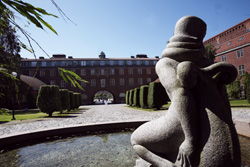Designing the RAE
There are many theoretical and practical decisions that need to be taken in order to run a research evaluation. In line with a commitment to transparency, here KTH outlines how it designed a research evaluation fit for the nature and goals of this specific university.
As well as a description of the principles behind the RAE, readers can also access:
Organization of the KTH RAE 2008
Evaluation Method and Criteria of Assessment
Focusing on Quality – principles behind the International RAE

At the start of 2008, KTH (the Royal Institute of Technology) set itself the challenge of evaluating the entire scope of its research base. This evaluation took place over six months and engaged all of KTH’s research staff as well as 80 international research experts. It was the first time that a technical research university in Sweden had undertaken a project of this type and scale. The purpose of the evaluation was to enable KTH to identify areas of existing research strength and emerging potential against an international benchmark. The evaluation itself was designed to initiate a strategic process across the university, within which all research staff would consider the future direction of their work.
The principles behind the RAE were that it should:
- Evaluate KTH’s research against an international benchmark
- Be sensitive to the particular demands of evaluating research in a technical university
- Engage all members of KTH’s research staff
- Be forward looking by centering around a discussion of future strategy
- Support transparency and better decision making at KTH
